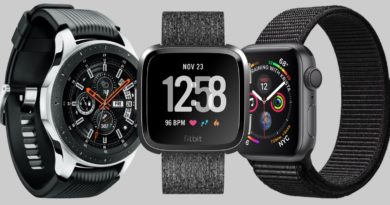Huawei HarmonyOS: What we know so far about the wearable-friendly OS
![]()
Huawei promised it would roll out its own operating system as it continues to face uncertainty about its future in the US amidst a possible trade ban. That uncertainty led Google to cut future Android updates to Huawei’s devices. Right now, it’s been granted a temporary license to keep those devices up to date with Google’s operating system.
If ties with Google are cut permanently, Huawei believes HarmonyOS will fill that huge software void for those who already own Android-running devices.
Read more: Best Apple Watch alternativesUnveiled at the company’s 2019 developer conference, the open-source platform is expected to run on a host of devices including smartwatches.
So what do we know about Huawei HarmonyOS so far? We break down the few details that have been shared so far about the new OS.
Huawei HarmonyOS: What is it?Huawei says HarmonyOS is primarily aimed at smartwatches, smart screens and smart speakers. It also says it’s a lightweight compact operating system that has been built on a trustworthy and secure architecture.
Richard Yu, CEO of Huawei’s Consumer Business Group, explained at its developer conference that this operating system is completely different from Android and iOS. “It is a microkernel-based, distributed OS that delivers a smooth experience across all scenarios.” This means, in practise, that it will work adaptably across different types of devices, in comparison to Google’s somewhat distinct Android and Wear OS platforms.
Huawei backed up these claims with further details about this microkernel architecture. For one, it has showcased what it’s calling the OS’s “Deterministic Latency Engine”, a system designed to prioritise tasks to ensure high speed. It claims this can make HarmonyOS, “fives times faster than existing systems”, without naming iOS or Android specifically.
Huawei HarmonyOS: SecurityThe Chinese company has also highlighted the secure nature of HarmonyOS, as it employs multiple verification systems and also restricts root access in a similar way to Apple’s iOS. Given Huawei’s recent issues, it’s no surprise to see this aspect of its new operating system being talked up.Huawei HarmonyOS: Compatibility and appsFrom a developer’s point of view, the OS sounds promising – Huawei revealed its integrated development environment (IDE), saying that “HarmonyOS can automatically adapt to different screen layout controls and interactions”, which should lead to more efficient design times. From a user’s point of view, the platform will be compatible with Android, HTML5 and Linux applications too. Huawei has also revealed that HarmonyOS will be compatible with existing Huawei hardware as well.
As for apps, Huawei has built its own app store and it’s called the Huawei AppGallery. To get that app store stocked, it’ll need to get developers to publish Android apps in its own App Store, which we imagine could take some time.
Huawei HarmonyOS: What about LiteOS?Aside from tapping into Google’s Android for its phones and tablets, Huawei already has its own in-house operating system and that’s called LiteOS. That operating system has been used in its fitness trackers like the Huawei Band 3 Pro. It also featured on the Huawei Watch GT, a smartwatch that saw the company swap Google’s Wear OS for it’s own software. It’s believed that Huawei will take all of the good stuff built into LiteOS and combine that with what it has been working on with HarmonyOS going forward.
Huawei HarmonyOS: Release date and new devicesHuawei has already unveiled and released a new TV featuring HarmonyOS, the Honor Smart Screen. It has also indicated that the OS will continue to roll out to smartwatches and smart devices this year in new products, and will continue spreading into other tech after that.


